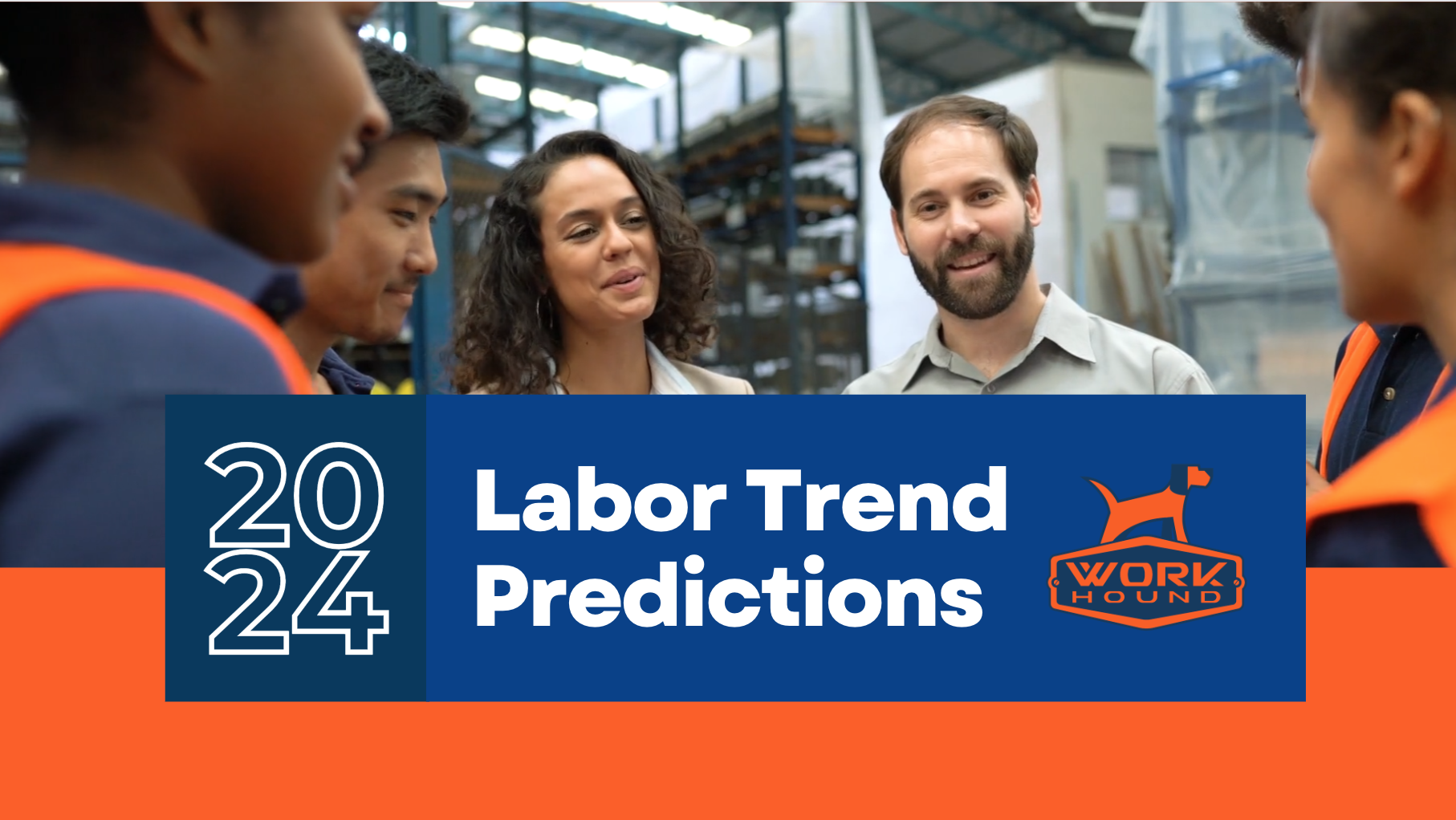How To Navigate 2024 Labor Trend Predictions

As we close in on 2024, the current labor landscape continues to evolve. With the upcoming National Labor Relations Board (NLRB) adjustments and shifting workforce trends, it’s critical for businesses to authentically engage with their workforces.
Today we’re talking through some of the trends we’re seeing in the labor market, along with key strategies that leaders can draw on for the upcoming year.
Key Labor Trends Heading into 2024
- Increased and Accelerated Union Elections: Changes by the NLRB will lead to quicker union elections, presenting a new terrain for both businesses and employees. This trend underscores the need for ongoing awareness and readiness to engage with workers and make them feel heard.
- Corporate Consolidation: The trend towards increased corporate consolidation could significantly impact labor relations. In bigger operations, managing workforce culture dynamics becomes even more critical, with more moving parts and more at stake.
- Frontline Recruiting and Retention Challenges: Frontline industries face unique dynamics that continually drive hiring and retention challenges. Addressing these issues requires a sustained focus on workforce engagement and job satisfaction.
- Driving Efficiency Amid Rising Costs: Across many industries, companies are seeing prices normalize to pre-pandemic levels. Meanwhile, costs have already continued to rise due to inflation, forcing companies to be pragmatic in what initiatives to focus on. Improving productivity will continue to be a focus in 2024 and beyond.
Frontline Worker Perspectives: What Leaders Are Missing and Why
It’s important to recognize that traditional business metrics like location performance, revenue, efficiency, and employee turnover, while essential for evaluating the overall health of a business, may not effectively capture the nuances of evolving labor relations. That’s because, while these metrics may show positive progress, trouble could be brewing behind the scenes. This won’t be reflected in these kinds of data points, leaving leaders completely unaware of underlying employee discontent.
Without tools in place to capture employee sentiments and maintain a pulse on company culture, leaders can be left in the dark and employees are left in the lurch. When we look at the flow of information, it’s easy to see how leaders at the top of an organization may not have access to all the information they need to make informed decisions for the workforce. In larger companies especially, middle management can unintentionally act as a bottleneck, filtering crucial information and preventing it from reaching the top. Leaders also have limited interactions with customers, a job that’s frequently left up to logistics teams and truck drivers, forcing them to fend for themselves if and when problems arise in the field. And, with workforces dispersed across multiple locations, it’s particularly challenging for top leaders to keep tabs on everything.
So, while business metrics point to “all systems go,” employees can very well be struggling. Compounding the problem, leaders think things are great, so they spend even less hands-on time with their teams, sowing even more discord. This past year, we’ve heard from several frontline businesses that their strongest-performing locations were the very ones that petitioned for union elections — seeking the support and representation that they were not getting from their company leaders.
A Proactive Approach to Workforce Engagement
While business metrics cannot always capture workforce sentiments, proactive engagement can. Catching up with WorkHound CEO Max Farrell, here are seven proactive workforce engagement strategies he says leaders can lean on in 2024:
- Find and Fix Issues Fast: Now more than ever, it is imperative to identify and resolve workplace issues quickly. This goes beyond analyzing spreadsheets and performance. It requires a commitment to continuous, large-scale listening and engagement with workers.
- Look Beyond Annual Surveys: While annual surveys aim to capture employee sentiments, they fall short in today’s fast-paced work environment. Modern leaders need more than once-a-year engagement; employee feedback should be solicited proactively and on a regular basis, offering ongoing real-time insights into employee concerns.
- Train Frontline Managers: Managers for frontline employees should be advocates who, rather than shielding top leaders from problems, are empowered to solve them. Equipping managers with the skills to effectively engage with their teams fosters an environment of open communication and trust.
- Establish Regular Employee Relations Reviews: To ensure that issues are being addressed effectively across the organization, it’s absolutely essential to have a gauge on how things are working.
- Embrace Active Listening: Develop methods for gathering qualitative insights from workers and ensure these perspectives reach decision-makers. These insights can help identify ways to streamline operations and identify hot button issues.
- Add People Data to the Company Scorecard: Just as leaders need deep insights into the organization’s financials and productivity KPIs to avoid disruptions, leaders also need a constant pulse check on the workforce.
- Leverage Digital Communication Tools: Utilize modern technology to maintain continuous dialogue with employees, giving them regular opportunities to raise concerns, voice their opinions, and share their work experiences.
Engaging with the Modern Workforce
Digital communication tools, when used effectively, can bridge gaps between management and employees. WorkHound’s platform for continuous feedback makes communication a two-way street, creating a workplace culture that is employee-centric and respectful of worker rights — with or without a union.
It’s also important to remember that frontline managers play a pivotal role in shaping the employee experience. Their direct interaction with the workforce puts them in a unique position to gauge employee sentiment and identify issues early on, stepping in to resolve issues before they escalate to cultural problems.
Adapting to Labor Trends in 2024 and Beyond
Companies that are able to make changes proactively, engage with their workforce meaningfully and leverage technology effectively will be better positioned to navigate evolving labor dynamics.
By fostering a culture of open communication, committing to continuous listening, and initiating proactive problem-solving, businesses can create harmonious and productive work environments, ultimately benefiting both employees and the organization.
To learn more about how WorkHound can help carry your organization into 2024, contact us for a free Workforce Engagement Strategy session.
Let's Build Better Workplaces Together
Revolutionize your company culture and your worker retention rates by improving communication and engagement.
Book a Demo

